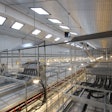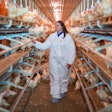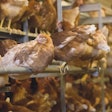A recent peer-reviewed article in the Journal of Renewable Agriculture and Food Systems compared eggs from hens in cages fed conventional layer diets with free ranged hens fed on either grass, alfalfa or clover pastures.
Hens on pasture were fed a conventional diet for the six week experimental period. Eggs from hens on pasture in comparison with eggs from caged hens had twice the level of vitamin E and omega-3 fatty acids and demonstrated a more favorable omega-3 to omega-6 fatty acid ratio. At the end of the experiment, pastured hens were 14% lighter than caged hens and produced 15% fewer eggs.
Although maintaining hens on pasture enhanced the nutrient content of their eggs compared to caged hens the same effect is achieved by dietary supplementation as in the case of the leading specialty brands with higher vitamin E and omega-3 fatty acid content. The marked drop in body weight and reduced egg production over a six week period suggest that had the trial been extended, further deterioration would have occurred adding to the inherent losses due to predation, parasitism and pathogens.
The article did not include an economic analysis but it is evident that increased labor costs associated with operating flocks on pasture together with the deterioration in production efficiency would produce an inferior return relative to confined, high-density housing.













